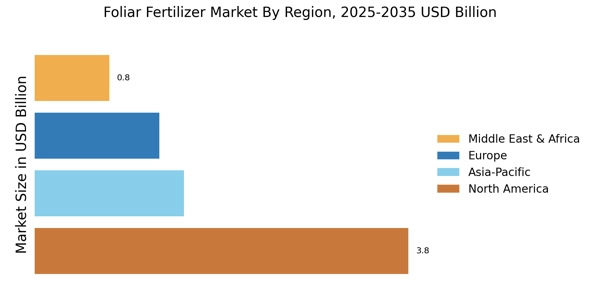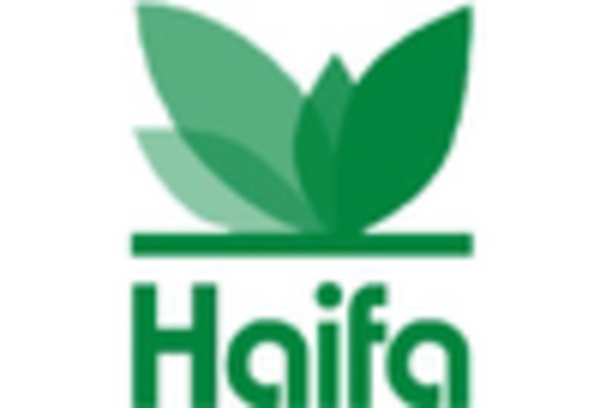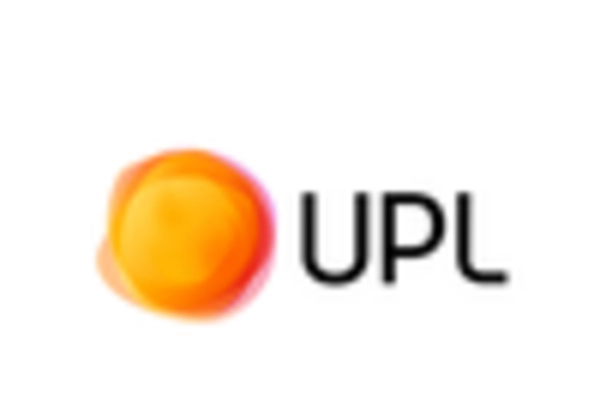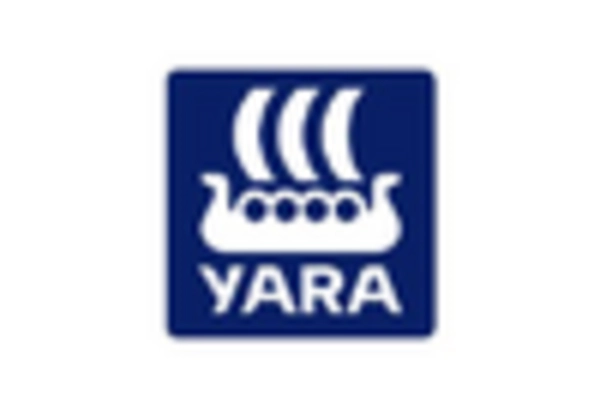Focus on Sustainable Agriculture
The growing emphasis on sustainable agricultural practices is a crucial driver in the Foliar Fertilizer Market. As environmental concerns rise, farmers are increasingly seeking methods that minimize ecological impact while maximizing productivity. Foliar fertilizers, known for their efficiency in nutrient delivery, align well with sustainable practices by reducing the need for excessive soil amendments. Furthermore, the adoption of integrated pest management (IPM) strategies often incorporates foliar applications to enhance plant health without resorting to harmful chemicals. This shift towards sustainability is likely to propel the Foliar Fertilizer Market forward, as more farmers recognize the benefits of environmentally friendly fertilization methods.
Rising Demand for Organic Produce
The increasing consumer preference for organic produce is a notable driver in the Foliar Fertilizer Market. As consumers become more health-conscious, they seek food products that are free from synthetic chemicals. This trend has prompted farmers to adopt organic farming practices, which often necessitate the use of foliar fertilizers that comply with organic standards. According to recent data, the organic food market has been experiencing a compound annual growth rate of over 10%, indicating a robust demand for organic farming inputs. Consequently, the Foliar Fertilizer Market is likely to witness a surge in demand as farmers transition to organic methods, thereby enhancing crop quality and yield without compromising consumer health.
Technological Innovations in Fertilization
Technological advancements play a pivotal role in shaping the Foliar Fertilizer Market. Innovations such as precision agriculture and smart farming techniques have revolutionized the way fertilizers are applied. These technologies enable farmers to optimize the timing and quantity of foliar applications, leading to improved nutrient absorption and reduced wastage. For instance, the integration of drones and satellite imagery allows for real-time monitoring of crop health, facilitating targeted foliar applications. As a result, the Foliar Fertilizer Market is expected to expand, with an increasing number of farmers adopting these technologies to enhance productivity and sustainability in their agricultural practices.
Increasing Global Population and Food Demand
The relentless growth of The Foliar Fertilizer Industry. As the population continues to rise, the demand for food is expected to increase significantly, necessitating higher agricultural productivity. Foliar fertilizers offer a viable solution to enhance crop yields and meet this burgeoning demand. Recent projections indicate that food production must increase by approximately 70% by 2050 to sustain the growing population. This urgency compels farmers to adopt efficient fertilization techniques, including foliar applications, to maximize output. Consequently, the Foliar Fertilizer Market is poised for growth as agricultural stakeholders seek effective ways to address food security challenges.
Government Initiatives Supporting Agriculture
Government policies and initiatives aimed at boosting agricultural productivity are significant drivers in the Foliar Fertilizer Market. Many governments are implementing programs that promote the use of advanced fertilizers, including foliar options, to enhance crop yields and ensure food security. For example, subsidies and financial incentives for farmers adopting modern fertilization techniques are becoming more prevalent. This support not only encourages the use of foliar fertilizers but also fosters research and development in this sector. As a result, the Foliar Fertilizer Market is likely to benefit from increased adoption rates, as farmers are motivated to utilize these products to meet both domestic and international food demands.


















Leave a Comment